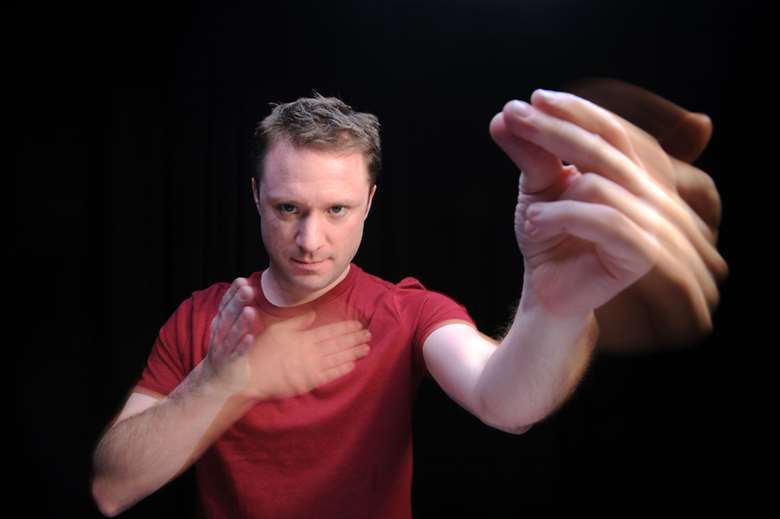Colin Currie introduces Kalevi Aho's Concerto for Percussion & Orchestra, 'Sieidi'
Colin Currie
Wednesday, October 14, 2020
‘Part of this composer’s mastery is the structural backbone to all his music, and the architectural conceit of this piece is frankly fantastic’

Colin Currie (photo: Linda Nylind)
2006 saw the world premiere of Kalevi Aho’s Clarinet Concerto. This was the first work that alerted me to this composer’s expansive and sweepingly symphonic style, as well as giving the first hints of his intimate obsessions with every single instrument of the orchestra (and beyond!) and their innermost expressions.
Thoroughly captivated, I made some inquiries and arranged a meeting for my next trip to Helsinki. This was in 2009 and at the time when I was launching my much beloved concerto Incantations by Einojuhani Rautavaara and starting to work often in Finland, as well as building close ties to the conductors Osmo Vänskä and John Storgårds. All of these elements would combine in the assembly of my own Kalevi concerto, with Aho’s own pupil-teacher ties to Rautavaara bringing us full circle. Both concertos commence their melodic themes voiced dissonantly in 2nds, for example.
My own connection with Kalevi got off to a fascinating start, with a deeply animated and convivial dinner, over which we discussed what could be, or what ought to be, the merits of ‘a real percussion concerto’. He was adamant to cast the soloist into a powerfully protagonistic role, commanding a dramatic presence at the heart of the music, be it wild and virtuosic or hushed and poetic (I would get plenty of both). In what would be, I am sure, a not at all atypical fever of research and reflection, Kalevi had already amassed scores and recordings of vast amounts of the existing repertoire and he picked his way fascinatingly through many of the key percussion works, offering praise here, and sounding caution there.


Kalevi Aho and Colin Currie in 2014
Part of this composer’s mastery is the structural backbone to all his music, and the architectural conceit of this piece is frankly fantastic. And indeed, like all the finest examples of such brilliance, the concept ticks along the whole time, pulling everything together, you might not even identify it...and yet you are in its grasp. In this instance, the percussionist is given just nine sounds (nine!) in the entire symphony-sized work, and the elements are laid out along the front of the stage in full view from the offing.
We begin grandly, with a djembe calling the elements to life, at the start of the work. Next up is the darabuka, another drum played with the hands, but more frenetic, more dextrous. For the third entry, sticks are sanctioned, and tom-toms and snare drum are dispatched. We then move to instruments of precise pitch, but again an architecture is at play – marimba with at first just one mallet, then two, and now finally all four in use. Visits to temple and wood blocks, the vibraphone (including a solo cadenza, one of my most treasured moments in the work) and a huge tam-tam complete the sonic inventory. Lo-and-behold, the soloist has made their way from stage left, to stage right – and now, carefully, softly at first, do they begin their return journey. And in a way in which I will eternally salute this composer, they make their way back to base, and yet each visit to the instruments en route reveals a completely different aura from within. By finding a totally contrasting and complimentary identity for each of the instruments in the second half of the concerto, we are treated to a perfect example of same-but-differnet. Glorious!
Kalevi also wanted to ‘let me in’ somewhat, into the creation of material for certain sections of the piece. Very astutely, he recognised the improvisational importance of the percussive art, and so in two sections (armed with tam-tam and drums respectively) I am given free-range to cut loose in my own way and in the moment. This was a humbling extension of his artistic generosity, handing me the reigns for some of the music’s highest drama – and indeed these moments remain suitably volatile and subject to enormous variation. What happens at those moments on this particular recording, is from that particular day in January 2020, when we were all, without knowing it, walking on a knife-edge. I’ve often said that this concerto is like an entire world, or life-cycle, and as such listening to it now is more thought-provoking than ever.
Colin Currie's recording of Kalevi Aho's Concerto for Percussion & Orchestra, 'Sieidi' with the Lahti Symphony Orchestra and Dima Slobodeniouk is out now on BIS Records








